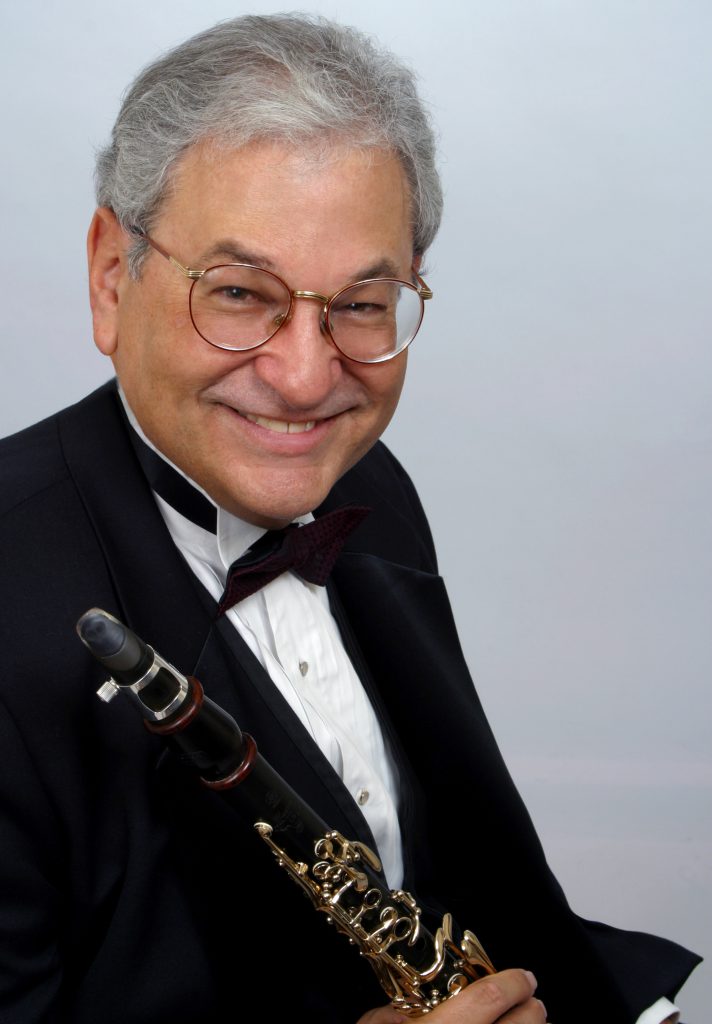Chamber Music Society serves up polished program, from Mozart to Shostakovich

David Shifrin performed music of Mozart and Bartók with the Chamber Music Society of Lincoln Center Tuesday night.
While the new and the unfamiliar waited till another night, Bartók’s Contrasts, Shostakovich’s Piano Trio No. 2, and Mozart’s Clarinet Quintet, hall-of-famers all, graced the Alice Tully Hall stage in fluent, polished performances.
Contrasts, in fact, sounded perhaps a little too polished, as played by violinist Bella Hristova, clarinetist David Shifrin and pianist Gloria Chien, who seemed to be taking literally the program’s overall title, “Return to Mozart.” The piece’s opening “Verbunkos” is, after all, a recruiting dance—i.e., music to get men in the mood to join the army. As admirable as the players’ brilliant technique and seamless ensemble were on Tuesday, one wished for a little less garden party and more soccer hooliganism.
The leisurely “Pihenő” that followed, however, had plenty of nocturnal character, and pointed up the “contrasts” that Bartók exploited among the hum of the clarinet, the scrape of the violin, and the ping of the piano. Shifrin’s attenuated clarinet tone drifted through the music like tendrils of fog.
The closing “Sebes” had all the energy and brilliance one could ask for in a finale, topped off by Hristova’s dazzling, humorous violin cadenza. Since the piece was composed for Jewish jazz legend Benny Goodman, a touch more klezmer squawk might have been in order (and also would have linked this movement to its Jewish-inspired counterpart in the Shostakovich trio).
Hristova and pianist Chien returned, with cellist Dmitri Atapine, for an evocative rendering of the Shostakovich trio. Here the Mozartean virtues of taut line and clear intention brought out the neoclassical character of the first movement, especially in Chien’s simple yet eloquent introduction of the main theme and rock-solid pulse throughout. Incisive and expressive string playing completed the picture.
In the brief scherzo, catchy tunes, buoyant rhythm and a certain devil-may-care attitude brought to mind not Mozart but Saint-Saëns. On the other hand, there was a Handelian solidity to the third movement’s passacaglia, with its searching string lines over a foundation of long, eloquently voiced piano chords.
In the justly famous finale, string pizzicato and soft piano staccato kept an inexorable pulse ticking as the music moved through furtive, mysterious and ferocious moods. The players sustained the movement’s expressive arc all the way to the enigmatic close, while pianist Chien’s phrasing of the Jewish-style dance tune seemed to reflect both the vitality and the sufferings of an entire people.
When the program finally did “return to Mozart,” the childlike simplicity of the Clarinet Quintet’s opening theme immediately dispelled the Shostakovichian shadows. Unfortunately, this performance by clarinetist Shifrin, violinists Danbi Um and Hristova, violist Mark Holloway, and cellist Atapine also dispelled the rhythmic vitality that had enlivened the previous piece, and the movement wandered a bit at first, especially in the clarinet’s rendering of the second theme. Later, a vigorous development section and richly elaborated recapitulation pulled the performance up considerably.
Just to play the seemingly endless clarinet lines of the Larghetto would be an achievement, but Shifrin’s extraordinary breath control enabled him to explore nuances within them while sustaining the movement’s rapt atmosphere. However, the “contrast” between his mellow tone and the violin’s reedy sound was less welcome here than in the Bartók piece.
Violinist Um charmed with long dancing lines in the first of the generous minuet’s two trios, and the main minuet had a graceful swing to it. Rhythm was less secure in the folksy, ländler-style “bonus” trio, the clarinet playing particularly out of time in a performance somewhat overinflected by all.
Happily, the group found its rhythmic footing in the variations finale, which depends for its effect not on razzle-dazzle but on characterful playing buoyed by a steady pulse. The five players supplied these in abundance, each making a vivid impression with his or her featured variation, and, following a particularly delicate and playful coda, were rewarded with enthusiastic applause.
The next presentation of the Chamber Music Society of Lincoln Center will be violinist Alexander Sitkovetsky and pianist Wu Qian in works by Schumann, Falla, Schnittke and Grieg, 7:30 p.m. Thursday in the Rose Studio, Lincoln Center. chambermusicsociety.org; 212-875-5788.